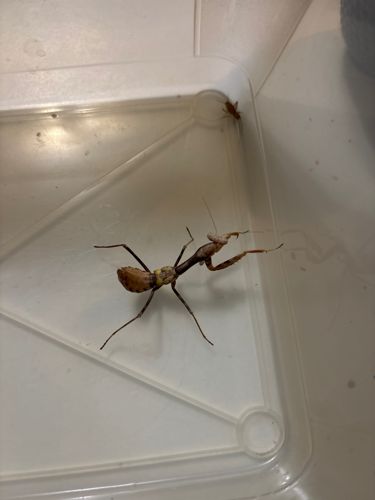Praying Mantis
Scientific Name: There are many species of praying mantises; a common genus is Mantis. Without more specific identification, a general scientific name like Mantis religiosa (European Mantis, a widely known species) or a general order like Mantodea is appropriate. Based on the image, it's difficult to pinpoint an exact species, but it appears to be a smaller, slender species, possibly mimicking a stick or twig, common in genera like Phyllocrania or similar 'stick mantis' type.
Order & Family: Order Mantodea, Family Mantidae (or various families within Mantodea, depending on classification; Mantidae is the largest and most common family)
Size: Size varies greatly by species, ranging from approximately 1 cm (0.4 inches) to over 15 cm (6 inches) in length. The mantis in the image appears to be on the smaller to medium side.

Natural Habitat
Praying mantises are found in various warm and tropical habitats around the world, including grasslands, forests, gardens, and shrubby areas. They are often found on plants, camouflaged amongst leaves and stems.
Diet & Feeding
Mantises are carnivorous insects that primarily feed on other insects such as flies, moths, butterflies, crickets, grasshoppers, and sometimes even smaller mantises. Larger species may occasionally prey on small vertebrates like lizards, frogs, or birds.
Behavior Patterns
Mantises are predatory insects known for their distinctive "praying" stance. They are ambush predators, often remaining motionless and camouflaged, waiting for prey to come within striking distance of their raptorial forelegs. They can pivot their heads 180 degrees to scan their surroundings. Reproduction involves the female often consuming the male after or during mating, though this behavior is more common in captivity.
Risks & Benefits
Mantises pose no known risks to humans. On the benefit side, they are excellent biological pest controllers, consuming many garden pests, which makes them beneficial to agriculture and home gardening. However, they are also generalist predators and will eat beneficial insects, including pollinators.
Identified on: 8/15/2025